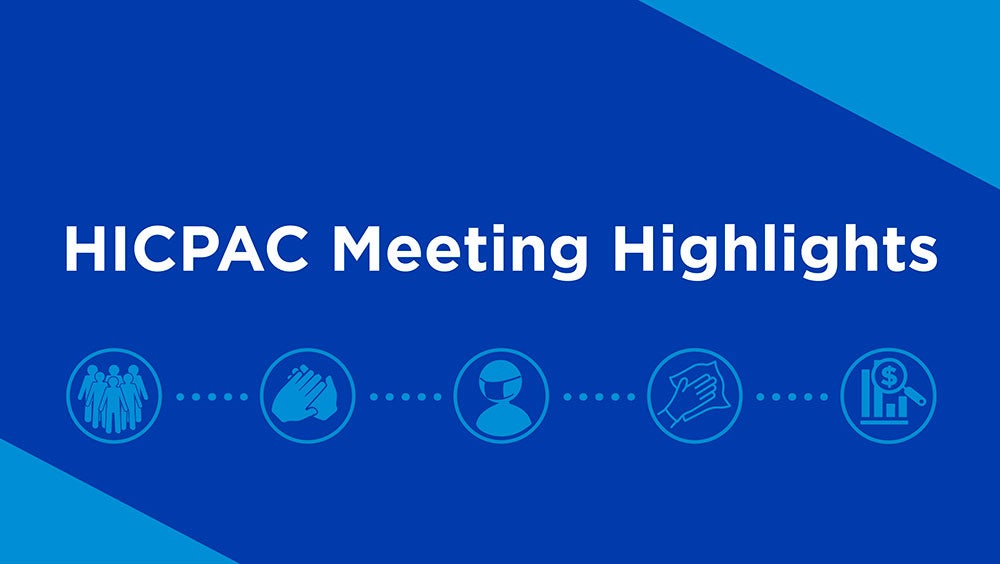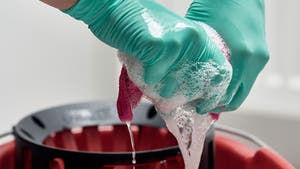About the HICPAC Blog Series
The Healthcare Infection Control Practices Advisory Committee (HICPAC) is a federal committee that provides guidance on infection prevention practices in US to the federal Department of Health and Human Services and the Centers for Disease Control and Prevention (CDC) in US healthcare settings. As Infection Preventionists, we are all familiar with the HICPAC guidelines including, but not limited to, the Hand Hygiene and the Environmental Infection Control Guidelines. HICPAC meets several times each year, where among other activities, new guidelines are developed and older guidelines are updated. This blog series will highlight the key discussions at these meetings. Because of the lengthy delay from meeting to posting of the minutes, we hope you will find our HICPAC meeting summary blog posts helpful to keep you informed in a timely manner.

Introduction
In this review of the meeting held on October 28, 2021, I’ll highlight updates from the Division of Healthcare Quality Promotion (DHQP), Healthcare Personnel Guideline workgroup, and share about a new workgroup coming soon. Meeting topics of interest include the current respiratory infection and influenza (“flu”) situation, refugee health, support for long-term care facilities, and upcoming isolation guideline work.
DHQP Update
Although vaccine availability is wider than it ever has been, and the impact and spread of cold and flu are being closely monitored, Denise Cardo, MD and director of the DHQP shared that “as much as we’d like it to be the reality, a return to normal will not be an on/off switch”. This is especially true for healthcare where the situation will largely become facility, season, and situation dependent. Instead, efforts should be focused on making healthcare systems more resilient. “A return to the 2018 normal would be unfortunate instead of moving to a new normal, adopting and learning from the pandemic”.
Michael Bell, Deputy Director of DHQP, provided some health insights about the current refugee crisis in Afghanistan where victims face austere conditions including crowding and low vaccination rates. He emphasized the need for public health interventions such as screening and immunization prior to relocation. It was reported that the Department of Defense (DOD) was able to administer 60 thousand vaccines to refugees at high risk for infection. The crisis which expected to see upwards of 5,000 measles cases, only had 60, providing further evidence of the effectiveness of vaccines and public health.
A brief update was provided by Arjun Srinivasan, MD and Associate Director for DHPQ (and other CDC programs) noting that a host of issues were brought forward by the pandemic particularly in Long-term Care Facilities. To support these types of facilities in the future, millions of dollars are being proposed to assist state health departments with hopes to establish “Nursing Home Strike Teams”. The Long-term Care workgroup is currently resuming work and open to new member participants.
Healthcare Personnel Guidelines Workgroup Update
The Healthcare Personnel Guideline, first written in 1998, addresses health and safety in the workplace for healthcare workers including exposures and illnesses1. Recently, HICPAC published revised guidance for Pertussis, Meningococcal Disease, Diphtheria, and Group A Streptococcus. Further, updates to the following were recently approved by HICPAC with a publish date forthcoming.
- Measles, Varicella, and Rabies (Aug 2021)
- Parvo and Cytomegalovirus (Nov 2021)
Review of S. aureus key questions and literature review is currently underway. Respiratory Viral Pathogens review will be restarting soon and other bloodborne pathogens are on deck.
New HICPAC Workgroup Coming Soon
It was announced that a new workgroup will be forming in the coming months that will focus on reviewing and updating current isolation guidelines for healthcare facilities. This group will be led by Sharon Wright, MD, MPH, and HICPAC member who plans to kick things off reframing how infections are transmitted as well as to integrate learnings from pandemic regarding emerging pathogens.
Summary
The October HICPAC meeting provided many valuable updates on the status of important and ongoing work. Be sure to watch for public comment periods on HICPAC guidelines in review. For more information about the meeting, schedule, and for previous minutes visit the HICPAC Meeting webpage. It is my hope that you have found this overview informative and helpful in your practice of infection prevention and control.
References
1. CDC. (2019). Infection Control in Healthcare Personnel: Infrastructure and Routine Practices for Occupational Infection Prevention and Control. Retrieved on 5 December 2021 from https://www.cdc.gov/infectioncontrol/guidelines/healthcare-personnel/index.html


